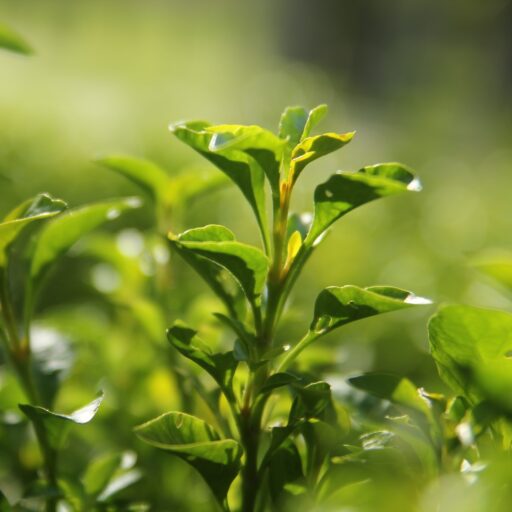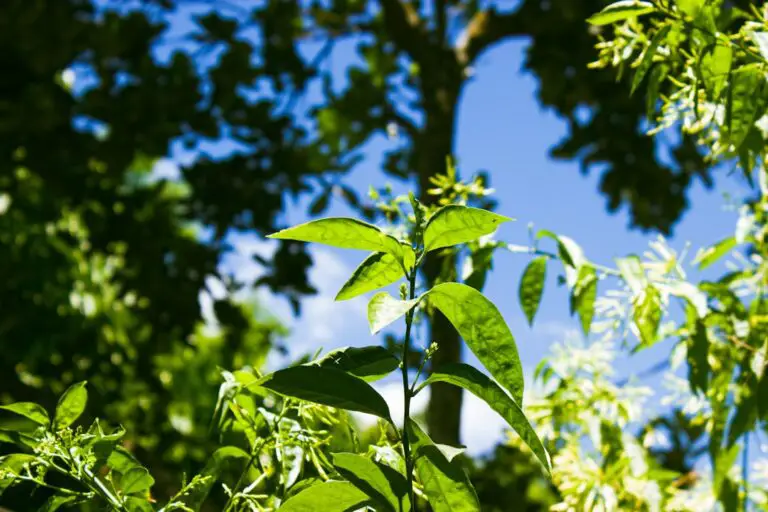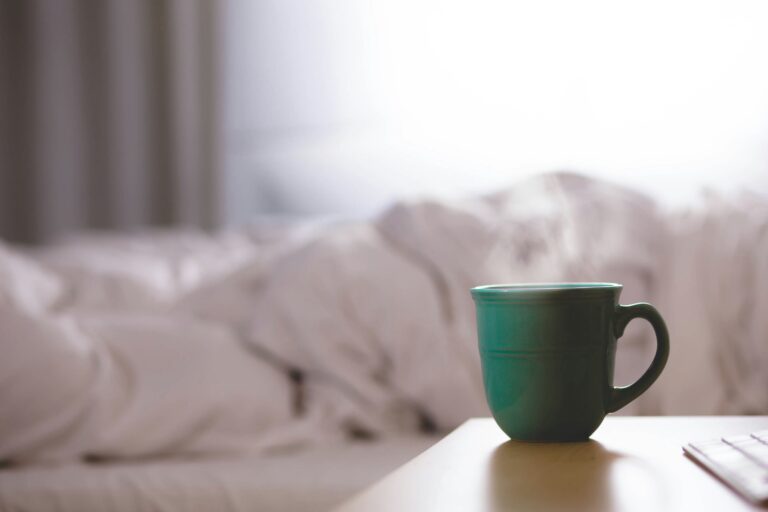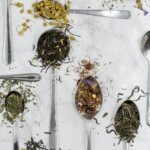Support our educational content for free when you purchase through links on our site. Learn more
Unlock the Secrets of 15 Herbs for Tea Blending at Home 🌿
Are you ready to embark on a flavorful journey that tantalizes your taste buds and boosts your well-being? Imagine sipping on a warm cup of tea that not only delights your senses but also supports your health! In this comprehensive guide, we’ll explore 15 incredible herbs for tea blending at home, revealing their unique flavors and benefits. Whether you’re a seasoned tea enthusiast or a curious beginner, you’ll discover how to create personalized blends that cater to your taste and wellness goals.
Did you know that the practice of blending herbs for tea dates back thousands of years? From ancient herbalists to modern-day tea lovers, the art of crafting unique blends has evolved into a delightful hobby that connects us with nature. So, grab your favorite herbs, and let’s dive into the world of tea blending!
Key Takeaways
- Explore 15 Essential Herbs: Discover a variety of herbs like chamomile, ginger, and echinacea that can elevate your tea experience.
- Craft Your Own Blends: Learn the 3 P’s—Person, Plants, and Purpose—to create personalized tea blends that suit your taste and health needs.
- Step-by-Step Guide: Follow our detailed instructions on how to measure, mix, and brew your own herbal tea blends at home.
- Health Benefits: Uncover the therapeutic properties of each herb, from immune support to relaxation.
- Gifting Ideas: Get creative with personalized tea blends that make thoughtful gifts for friends and family.
Ready to start blending? 👉 Shop herbal tea blending supplies like dried herbs and infusers at Mountain Rose Herbs or Starwest Botanicals to kick off your tea journey! 🌱✨
Table of Contents
Quick Tips and Facts
The Rich History of Herbal Tea Blending
Discover the Healing Powers of 12 Essential Herbs for Tea
Crafting Your Own Herbal Tea Blends: A Step-by-Step Guide
The 3 P’s of Perfecting Your Herbal Tea Blend
Who Will Enjoy Your Herbal Tea Blend?
Choosing the Right Plants for Your Herbal Tea Blend
Understanding the Purpose of Your Herbal Tea Blend
How to Measure Herbs for Your Tea Blend Like a Pro
The Benefits of Herbs in Our Cozy Winter Warming Tea Blend
Unlocking the Benefits of Anise Hyssop (Agastache foeniculum)
Exploring the Benefits of Echinacea (Echinacea purpurea)
Why Elderberries (Sambucus nigra) Are a Tea Time Must
The Surprising Benefits of Oatstraw (Avena sativa)
Discovering the Wonders of Tulsi (Ocimum tenuiflorum)
The Magic of Damiana (Turnera diffusa) in Tea Blends
Our Cozy Winter Warming Tea Blend Recipe
The Art of Gifting a Personalized Tea Blend
The Herbal Remedy Vault: Your Go-To for Printable Recipe Cards
Start with Simple Remedies That Work Wonders
Conclusion
Recommended Links
FAQ
Reference Links
Quick Tips and Facts #quick-tips-and-facts
- Always store your dried herbs and tea blends in airtight containers in a cool, dark place to preserve their freshness and flavor. We use Weck Jars in our pantry!
- Start with small batches when creating your own blends until you get a feel for the flavor combinations.
- Don’t be afraid to experiment! Tea blending is a fun and creative process, so let your imagination run wild. You can even grow many tea plants at home!
- Keep a tea blending journal to record your recipes, flavor profiles, and any adjustments you make along the way.
The Rich History of Herbal Tea Blending #the-rich-history-of-herbal-tea-blending
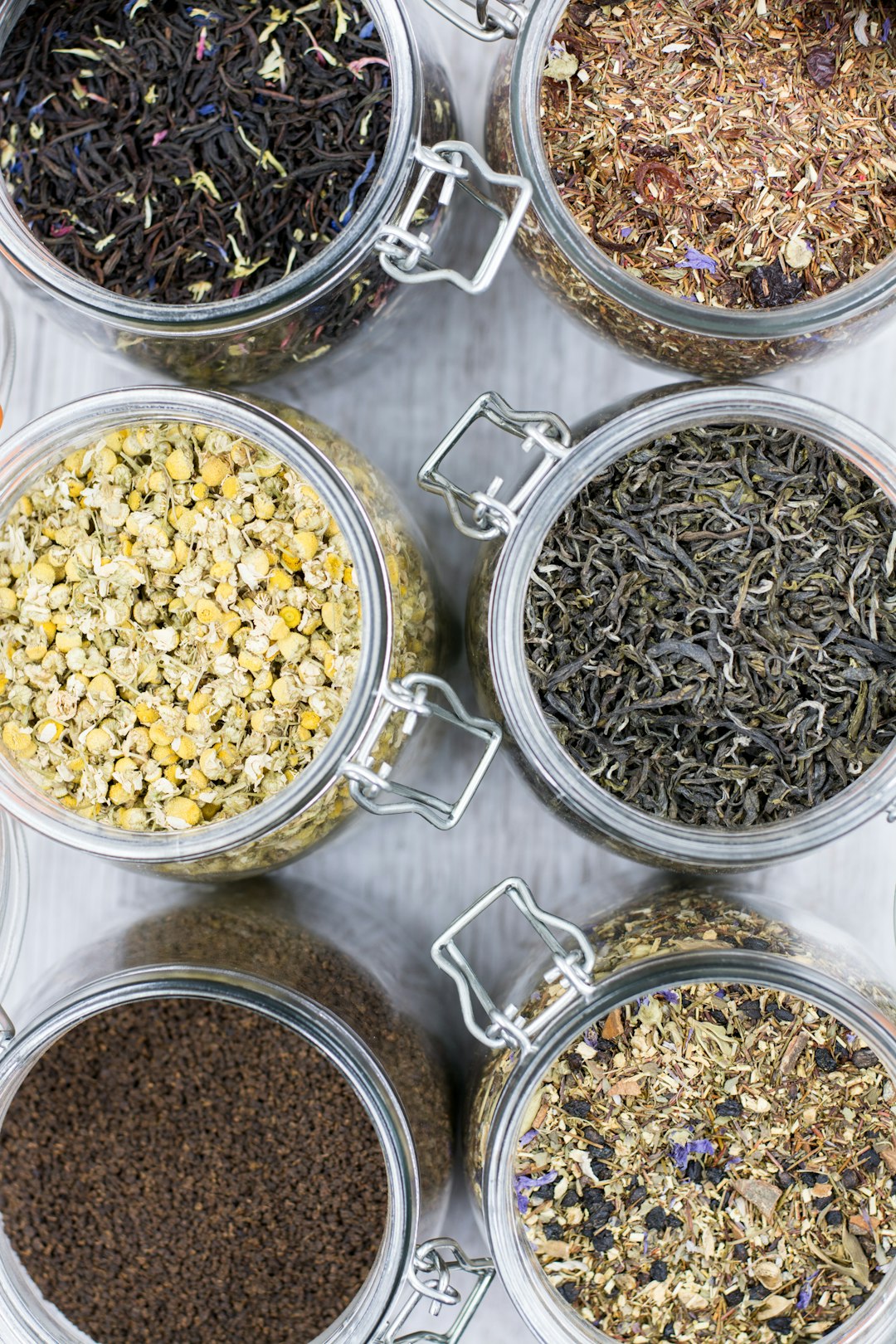
Herbal tea blending is a practice steeped in tradition, dating back thousands of years. From ancient Chinese herbalists using tea for medicinal purposes to Egyptian pharaohs enjoying aromatic infusions, the art of blending herbs for their flavor and therapeutic benefits has been passed down through generations.
Herbal Tea Around the World
Different cultures have developed their own unique tea traditions. In India, Ayurvedic practices incorporate herbs and spices like ginger, cardamom, and cloves into tea blends for their digestive and immune-boosting properties. South American cultures have long used yerba mate, a plant known for its stimulating effects, as a social beverage and for its health benefits.
Modern Tea Blending
Today, herbal tea blending continues to evolve, with a renewed focus on organic and sustainably sourced ingredients. People are rediscovering the joy of creating personalized blends tailored to their specific tastes and wellness goals.
Discover the Healing Powers of 12 Essential Herbs for Tea #discover-the-healing-powers-of-12-essential-herbs-for-tea
Herbs have been used for centuries for their medicinal and therapeutic properties, and incorporating them into your tea blends is a delicious way to harness their healing power. Here are 12 essential herbs to get you started:
- Chamomile: Known for its calming and soothing properties, chamomile is often enjoyed before bedtime to promote relaxation and sleep.
- Peppermint: This refreshing herb can aid digestion, relieve headaches, and soothe an upset stomach.
- Ginger: A warming and spicy herb, ginger is a popular remedy for nausea, colds, and flu.
- Lavender: With its beautiful aroma and calming effects, lavender can help reduce anxiety and promote sleep.
- Echinacea: This immune-boosting herb is often used to prevent and shorten the duration of colds and flu.
- Rooibos: Naturally sweet and caffeine-free, rooibos tea is rich in antioxidants and may offer various health benefits.
- Hibiscus: This tart and tangy herb is packed with antioxidants and can help lower blood pressure.
- Lemon Balm: With its lemony scent, lemon balm is known for its calming properties and may help reduce stress and anxiety.
- Rosehips: A good source of vitamin C, rosehips can help boost the immune system and may reduce inflammation.
- Calendula: This cheerful flower has anti-inflammatory and antimicrobial properties and can be used topically to soothe skin irritations.
- Dandelion Root: Often used as a digestive aid, dandelion root can also support liver function and act as a natural diuretic.
- Nettle Leaf: Rich in vitamins and minerals, nettle leaf is a nourishing herb that can support overall health and well-being.
Crafting Your Own Herbal Tea Blends: A Step-by-Step Guide #crafting-your-own-herbal-tea-blends-a-step-by-step-guide
Creating your own herbal tea blends is a rewarding experience that allows you to personalize your tea rituals and enjoy the therapeutic benefits of herbs. Here’s a step-by-step guide to get you started:
1. Gather Your Supplies
- Dried herbs of your choice
- Measuring spoons or a kitchen scale
- Airtight containers for storing your blends
- A tea infuser or strainer
- A teapot or mug
2. Choose Your Herbs
Select herbs based on your taste preferences and desired effects. Consider the following:
- Flavor Profile: Do you prefer floral, citrusy, spicy, or earthy flavors?
- Therapeutic Benefits: Are you looking for a calming blend, a digestive aid, or an immune booster?
- Seasonality: Some herbs, like peppermint and hibiscus, are refreshing in the summer, while others, like ginger and cinnamon, are warming in the winter.
3. Determine Your Ratios
Start with small amounts of each herb and experiment with different ratios until you achieve your desired flavor profile. A good starting point is a 1:1 ratio for two herbs or a 2:1:1 ratio for three herbs.
4. Blend Your Herbs
Combine your chosen herbs in a bowl and mix them thoroughly.
5. Store Your Blend
Transfer your herbal tea blend to an airtight container and store it in a cool, dark place.
6. Steep and Enjoy!
When you’re ready to enjoy your tea, add 1-2 teaspoons of your blend to a tea infuser or strainer and place it in a mug. Pour hot water over the herbs and steep for 5-10 minutes, or longer for a stronger infusion.
The 3 P’s of Perfecting Your Herbal Tea Blend #the-3-ps-of-perfecting-your-herbal-tea-blend
To create truly exceptional herbal tea blends, keep in mind the 3 P’s: Person, Plants, and Purpose.
The Person: Who Are You Blending For?
Consider the individual who will be enjoying your tea.
- Taste Preferences: Do they prefer sweet, floral notes like chamomile and lavender, or are they drawn to more robust flavors like peppermint and ginger?
- Dietary Needs: Are there any allergies or sensitivities to consider?
- Lifestyle: Is this a tea for a busy individual who needs an energy boost, or someone seeking relaxation and stress relief?
The Plants: Choosing the Right Herbs
Each herb possesses unique qualities that contribute to the blend’s overall flavor and therapeutic effects.
- Flavor Combinations: Experiment with complementary flavors, like chamomile and lavender for a calming blend, or ginger and lemon for an invigorating one.
- Medicinal Properties: Research the healing properties of each herb and combine them thoughtfully to address specific needs.
- Growing Conditions: If you’re using herbs from your own garden, consider their growing conditions and how this might affect their flavor and potency.
The Purpose: What’s the Intention?
Defining the purpose of your blend will guide your herb selection and ratios.
- Relaxation and Sleep: Chamomile, lavender, and lemon balm are excellent choices for promoting relaxation and sleep.
- Digestion and Detoxification: Peppermint, ginger, and dandelion root can aid digestion and support detoxification.
- Immune Support: Echinacea, elderberry, and rosehips are known for their immune-boosting properties.
Who Will Enjoy Your Herbal Tea Blend? #who-will-enjoy-your-herbal-tea-blend
When crafting your herbal tea blends, it’s essential to consider the recipient’s preferences and needs.
For the Tea Connoisseur:
- Unique and Rare Herbs: Impress them with blends featuring exotic herbs like tulsi, ashwagandha, or gotu kola.
- Complex Flavor Profiles: Experiment with layering flavors, incorporating spices like cardamom, cinnamon, and star anise.
- Exquisite Presentation: Package your blends in elegant tins or glass jars with personalized labels.
For the Wellness Seeker:
- Targeted Blends: Create blends that address specific health concerns, such as sleep support, digestive health, or immune boosting.
- Organic and Sustainable Ingredients: Choose high-quality, ethically sourced herbs to ensure purity and potency.
- Clear Instructions: Provide detailed brewing instructions and information on the benefits of each herb.
For the Everyday Tea Drinker:
- Familiar and Approachable Flavors: Start with blends that feature well-known herbs like chamomile, peppermint, and ginger.
- Versatile Blends: Create blends that can be enjoyed hot or iced, and experiment with adding sweeteners like honey or maple syrup.
- Simple and Convenient Packaging: Package your blends in reusable tea bags or airtight containers for easy storage.
Choosing the Right Plants for Your Herbal Tea Blend #choosing-the-right-plants-for-your-herbal-tea-blend
Selecting the right plants is crucial for creating a harmonious and flavorful herbal tea blend.
Understanding Herbal Energetics
In traditional herbalism, plants are classified according to their energetic properties, such as heating, cooling, drying, or moistening.
- Warming Herbs: Ginger, cinnamon, and cloves are warming herbs that can help boost circulation and warm the body.
- Cooling Herbs: Peppermint, hibiscus, and chamomile are cooling herbs that can help soothe inflammation and reduce heat.
Balancing Flavors and Aromas
Consider the following flavor profiles when selecting herbs for your blend:
- Floral: Chamomile, lavender, rose petals
- Citrus: Lemon balm, lemongrass, orange peel
- Spicy: Ginger, cinnamon, cloves
- Earthy: Rooibos, nettle leaf, dandelion root
Sourcing Your Herbs
- Growing Your Own: Cultivating your own herbs allows you to control the quality and freshness of your ingredients.
- Local Herb Farms: Support local farmers and businesses by sourcing herbs from nearby farms or markets.
- Reputable Suppliers: Choose reputable online or retail suppliers that offer high-quality, organic herbs.
Understanding the Purpose of Your Herbal Tea Blend #understanding-the-purpose-of-your-herbal-tea-blend
Before you start blending, it’s helpful to define the purpose of your tea. Are you creating a blend for:
- Relaxation and Sleep Support: Consider herbs like chamomile, lavender, lemon balm, and passionflower.
- Digestive Health: Peppermint, ginger, fennel, and chamomile can aid digestion and soothe the stomach.
- Immune Support: Echinacea, elderberry, astragalus, and ginger can help boost the immune system.
- Energy and Focus: Green tea, ginseng, gotu kola, and peppermint can enhance energy and improve cognitive function.
- Mood Support: St. John’s wort, lemon balm, chamomile, and lavender can help uplift mood and reduce stress.
How to Measure Herbs for Your Tea Blend Like a Pro #how-to-measure-herbs-for-your-tea-blend-like-a-pro
Accurate measurement is key to achieving consistent flavor and potency in your tea blends.
Measuring by Volume vs. Weight
- Volume: Measuring by volume, using teaspoons or tablespoons, is suitable for most home blenders. However, the density of dried herbs can vary, so this method may not be as precise.
- Weight: Measuring by weight, using a kitchen scale, is the most accurate method, especially when working with potent herbs or creating large batches.
General Guidelines for Measuring Herbs
- Start Small: Begin with small amounts of each herb, especially when experimenting with new blends. You can always adjust the ratios later.
- Consider Herb Potency: Some herbs, like peppermint and ginger, have a more intense flavor and should be used sparingly.
- Taste as You Go: It’s always a good idea to taste your blend as you go and adjust the ratios accordingly.
The Benefits of Herbs in Our Cozy Winter Warming Tea Blend #the-benefits-of-herbs-in-our-cozy-winter-warming-tea-blend
Our Cozy Winter Warming Tea Blend is a delicious and comforting blend of herbs traditionally used to support the body during the colder months.
Anise Hyssop (Agastache foeniculum)
- Respiratory Support: Anise hyssop is known for its expectorant properties, helping to clear congestion and soothe coughs.
- Digestive Aid: It can also help relieve gas and bloating, making it a great after-dinner tea.
- Calming Effects: The sweet, licorice-like flavor of anise hyssop can have a calming effect on the mind and body.
Echinacea (Echinacea purpurea)
- Immune Support: Echinacea is a well-known immune-boosting herb that may help prevent and shorten the duration of colds and flu.
- Anti-inflammatory Properties: It also has anti-inflammatory properties, which can help reduce swelling and pain.
Elderberries (Sambucus nigra)
- Antiviral Properties: Elderberries are rich in antioxidants and have been traditionally used to fight viral infections.
- Respiratory Health: They can also help soothe sore throats and reduce mucus buildup.
Oatstraw (Avena sativa)
- Nervous System Support: Oatstraw is a nourishing herb that can help calm the nervous system and reduce stress.
- Mineral Rich: It’s a good source of minerals like calcium, magnesium, and potassium.
Tulsi (Ocimum tenuiflorum)
- Adaptogenic Properties: Tulsi, also known as holy basil, is an adaptogen, meaning it can help the body adapt to stress.
- Respiratory Support: It’s also traditionally used to support respiratory health and reduce inflammation.
Damiana (Turnera diffusa)
- Mood Support: Damiana is known for its mood-boosting properties and may help reduce anxiety and stress.
- Hormonal Balance: It’s also been traditionally used to support hormonal balance.
Unlocking the Benefits of Anise Hyssop (Agastache foeniculum) #unlocking-the-benefits-of-anise-hyssop-agastache-foeniculum
Anise hyssop, with its beautiful lavender-blue flowers and delightful licorice aroma, is a versatile herb that deserves a place in your tea cabinet.
Respiratory Relief
This herb has long been valued for its ability to ease respiratory ailments. Its expectorant properties help to loosen phlegm and mucus, making it easier to cough up. Anise hyssop can be particularly helpful for:
- Coughs
- Bronchitis
- Asthma
- Sinusitis
Digestive Harmony
Anise hyssop can also help to soothe digestive discomfort. It has carminative properties, meaning it can help to reduce gas and bloating. This herb may also help to relieve:
- Indigestion
- Nausea
- Stomach cramps
Calming and Uplifting
Beyond its physical benefits, anise hyssop is also known for its calming and uplifting effects. The sweet, licorice-like aroma can help to promote relaxation and reduce stress.
How to Enjoy Anise Hyssop Tea
To make a soothing cup of anise hyssop tea, simply steep 1-2 teaspoons of dried herb in 8 ounces of hot water for 10-15 minutes. You can enjoy it plain or add a touch of honey or lemon to taste.
Exploring the Benefits of Echinacea (Echinacea purpurea) #exploring-the-benefits-of-echinacea-echinacea-purpurea
Echinacea, a popular herb native to North America, has gained widespread recognition for its immune-boosting properties.
Immune System Support
Echinacea is believed to stimulate the immune system by increasing the production of white blood cells, which are responsible for fighting off infections. Studies have shown that echinacea may help to:
- Reduce the risk of catching a cold
- Shorten the duration of colds and flu
- Alleviate cold and flu symptoms, such as sore throat, cough, and congestion
Anti-inflammatory Action
In addition to its immune-boosting effects, echinacea also possesses anti-inflammatory properties. This means it can help to reduce inflammation throughout the body, which may be beneficial for conditions such as:
- Arthritis
- Skin irritations
- Urinary tract infections
How to Incorporate Echinacea into Your Routine
Echinacea is available in various forms, including capsules, tinctures, and teas. To enjoy the benefits of echinacea tea, simply steep 1-2 teaspoons of dried herb in 8 ounces of hot water for 10-15 minutes.
Why Elderberries (Sambucus nigra) Are a Tea Time Must #why-elderberries-sambucus-nigra-are-a-tea-time-must
Elderberries, with their deep purple hue and tart-sweet flavor, have been a revered herbal remedy for centuries.
Antioxidant Powerhouse
Elderberries are packed with antioxidants, which help to protect the body from damage caused by free radicals. These antioxidants, including anthocyanins and flavonoids, may contribute to the berries’ impressive health benefits.
Immune System Ally
Elderberries are well-known for their immune-supporting properties. They contain compounds that may help to:
- Boost the production of white blood cells
- Inhibit the replication of viruses
- Reduce inflammation in the respiratory tract
Respiratory Relief
Elderberry has a long history of use for relieving respiratory ailments. It may help to:
- Soothe sore throats
- Reduce mucus production
- Ease coughs
How to Enjoy Elderberry Tea
Elderberry tea can be enjoyed on its own or combined with other herbs and spices for a flavorful and immune-boosting beverage.
The Surprising Benefits of Oatstraw (Avena sativa) #the-surprising-benefits-of-oatstraw-avena-sativa
Oatstraw, the often-overlooked stalk of the oat plant, is a nutritional powerhouse with a surprising array of health benefits.
Nervous System Support
Oatstraw is a nervine, meaning it has a calming and restorative effect on the nervous system. It contains compounds that may help to:
- Reduce anxiety and stress
- Improve mood
- Promote relaxation and sleep
Mineral Rich Nourishment
Oatstraw is a rich source of minerals, including calcium, magnesium, and potassium, which are essential for:
- Bone health
- Muscle function
- Nerve transmission
Skin and Hair Health
The silica content in oatstraw may contribute to healthy skin, hair, and nails. Silica is a key component of collagen, which helps to maintain skin elasticity and strength.
How to Enjoy Oatstraw Tea
Oatstraw tea has a mild, slightly sweet flavor and can be enjoyed daily.
Discovering the Wonders of Tulsi (Ocimum tenuiflorum) #discovering-the-wonders-of-tulsi-ocimum-tenuiflorum
Tulsi, also known as holy basil, is a revered herb in Ayurveda, the traditional system of medicine from India.
Adaptogenic Properties
Tulsi is an adaptogen, meaning it can help the body adapt to stress and maintain balance. It may help to:
- Reduce stress hormones, such as cortisol
- Improve energy levels
- Enhance mental clarity
Respiratory Support
Tulsi has long been used to support respiratory health. It may help to:
- Soothe coughs and sore throats
- Reduce inflammation in the respiratory tract
- Clear congestion
Immune System Support
Tulsi is also known for its immune-boosting properties. It contains compounds that may help to:
- Fight off infections
- Reduce inflammation
- Protect against oxidative stress
How to Enjoy Tulsi Tea
Tulsi tea has a unique, slightly spicy flavor and can be enjoyed daily.
The Magic of Damiana (Turnera diffusa) in Tea Blends #the-magic-of-damiana-turnera-diffusa-in-tea-blends
Damiana, a shrub native to Mexico, Central America, and the Caribbean, has a long history of use as an herbal remedy and aphrodisiac.
Mood Support
Damiana is known for its mood-boosting properties. It may help to:
- Reduce anxiety and stress
- Improve mood and well-being
- Enhance libido
Hormonal Balance
Damiana is believed to have a balancing effect on hormones. It may be beneficial for:
- Menstrual cramps
- Low libido
- Erectile dysfunction
Digestive Support
Damiana may also help to support digestion by:
- Stimulating appetite
- Relieving constipation
How to Enjoy Damiana Tea
Damiana tea has a slightly sweet, earthy flavor and can be enjoyed daily.
Our Cozy Winter Warming Tea Blend Recipe #our-cozy-winter-warming-tea-blend-recipe
This warming and flavorful tea blend is perfect for cozy evenings by the fire or sipping on a chilly winter day.
Ingredients:
- 2 parts anise hyssop
- 2 parts echinacea leaf and flower
- 2 parts elderberries
- 2 parts oatstraw
- 2 parts tulsi
- 1 part damiana
Instructions:
- Combine all ingredients in a bowl and mix well.
- Store in an airtight container in a cool, dark place.
- To brew, add 1-2 tablespoons of tea blend to a tea infuser or strainer. Place in a mug and pour 8 ounces of boiling water over the herbs.
- Steep for 10-15 minutes, or longer for a stronger infusion.
- Strain and enjoy!
The Art of Gifting a Personalized Tea Blend #the-art-of-gifting-a-personalized-tea-blend
A personalized tea blend makes a thoughtful and unique gift for any occasion.
Choosing the Right Blend
Consider the recipient’s taste preferences and any health concerns they may have.
- For the Tea Lover: Opt for a blend with unique or exotic herbs and spices.
- For the Stressed Out Friend: Choose calming herbs like chamomile, lavender, and lemon balm.
- For the Friend Recovering from an Illness: Select immune-boosting herbs like echinacea, elderberry, and ginger.
Packaging Your Gift
Present your tea blend in a beautiful and practical way.
- Glass Jars: Airtight glass jars are ideal for storing tea and look elegant with a personalized label.
- Tea Tins: Decorative tea tins offer a classic and stylish way to package your blend.
- Reusable Tea Bags: Fill reusable tea bags with your blend for a convenient and eco-friendly option.
Adding a Personal Touch
Make your gift extra special with these thoughtful additions:
- Handwritten Note: Include a handwritten note with brewing instructions and a personalized message.
- Honey Stirrer: Add a honey stirrer for a touch of sweetness.
- Tea Infuser: If the recipient doesn’t have one, include a tea infuser or strainer.
The Herbal Remedy Vault: Your Go-To for Printable Recipe Cards #the-herbal-remedy-vault-your-go-to-for-printable-recipe-cards
Want to explore more herbal tea blend recipes and expand your knowledge of herbal remedies? Check out our Herbal Remedy Vault, where you’ll find a treasure trove of information, including:
- Printable Recipe Cards: Download and print our beautifully designed recipe cards to keep your favorite tea blends organized.
- Herbal Monographs: Deepen your understanding of individual herbs with our comprehensive monographs, covering their history, uses, and benefits.
- Seasonal Wellness Guides: Discover how to use herbs to support your health and well-being throughout the year.
Start with Simple Remedies That Work Wonders #start-with-simple-remedies-that-work-wonders
You don’t have to be an experienced herbalist to create effective and delicious tea blends. Start with simple remedies using common herbs like chamomile, peppermint, and ginger, and gradually expand your repertoire as you gain confidence.
Remember, the most important ingredient in any tea blend is your intention. When you approach tea blending with mindfulness and a desire to nourish yourself or others, you’re sure to create something truly special.
Conclusion

Creating your own herbal tea blends at home is not just a delightful hobby; it’s a journey into the world of flavors, aromas, and health benefits. By understanding the 3 P’s—the Person, the Plants, and the Purpose—you can craft blends that are not only enjoyable but also tailored to meet specific wellness needs.
From the soothing qualities of chamomile to the immune-boosting power of echinacea, the herbs you choose can transform your tea experience. Remember, the key to a successful blend lies in experimentation and personal preference.
Positives:
- Customization: You can tailor blends to your taste and health goals.
- Freshness: Home-blended teas often taste better than store-bought options.
- Health Benefits: Many herbs offer therapeutic properties that can enhance well-being.
Negatives:
- Learning Curve: It may take some time to find the right combinations and ratios.
- Storage Needs: Dried herbs require proper storage to maintain their flavor and potency.
We confidently recommend diving into the world of herbal tea blending. With the right herbs and a little creativity, you can create delicious and healthful blends that will impress your friends and family! So, what are you waiting for? Grab your herbs and start blending! 🌿☕
Recommended Links
-
👉 Shop Herbal Tea Blending Supplies:
- Mountain Rose Herbs: Shop here
- Starwest Botanicals: Shop here
- Amazon: Shop herbs and tea accessories
-
Books on Herbal Tea Blending:
- “The Herbal Medicine-Maker’s Handbook” by James Green: View on Amazon
- “The Complete Book of Herbal Tea” by K. M. H. McCarthy: View on Amazon
- “Herbal Tea: The Ultimate Guide” by J. A. Smith: View on Amazon
FAQ
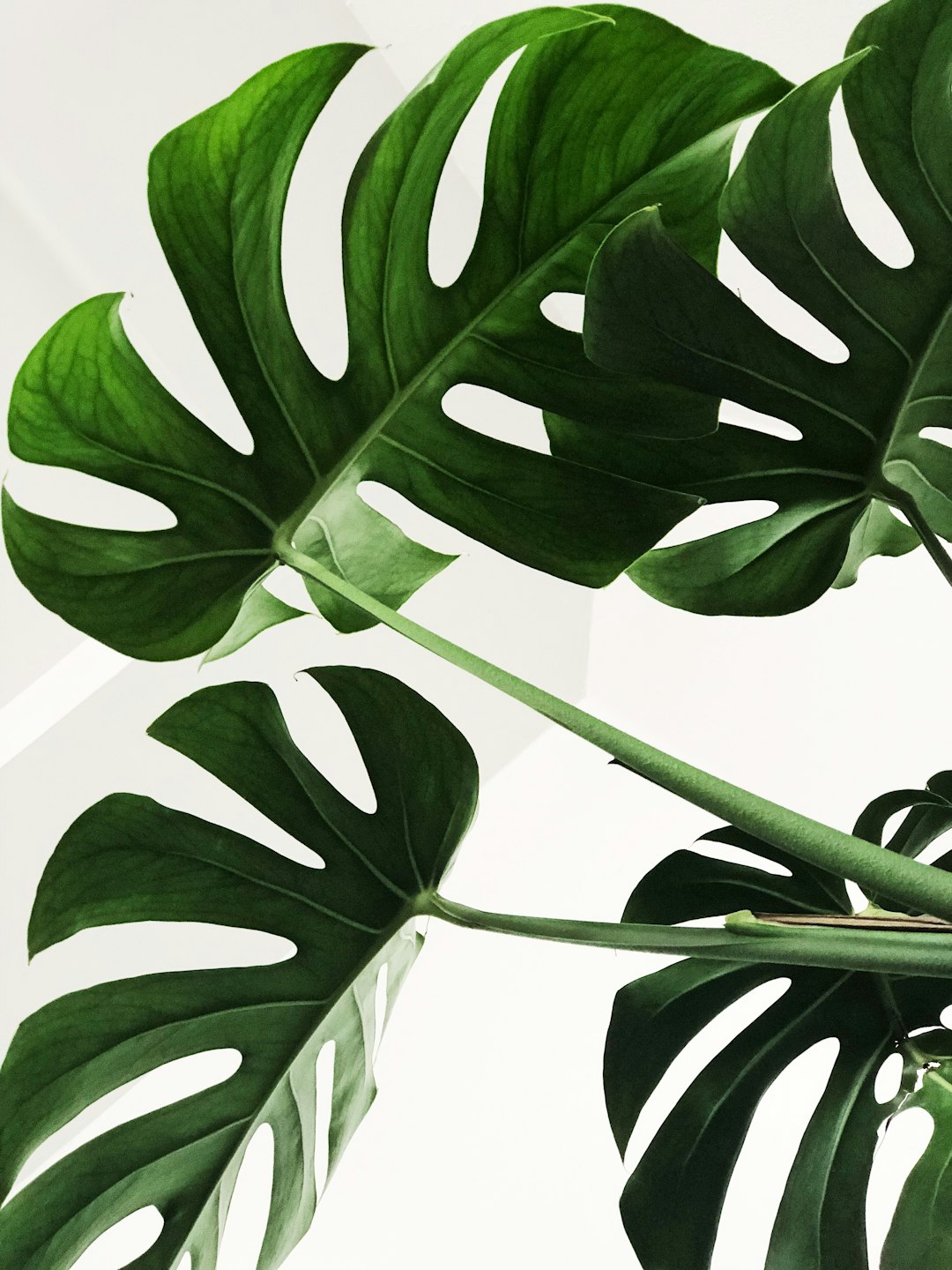
What are the most popular herbs for tea blending and how do I combine them?
Popular herbs for tea blending include chamomile, peppermint, ginger, lavender, echinacea, and rooibos. To combine them effectively, consider their flavor profiles and therapeutic properties. For instance, a calming blend could include chamomile and lavender, while a digestive blend might feature ginger and peppermint. A good rule of thumb is to start with a base herb (like chamomile) and add complementary flavors (like peppermint) in smaller ratios.
How do I dry and store herbs for tea blending to preserve their flavor and aroma?
To dry herbs, hang them upside down in small bunches in a cool, dark, and well-ventilated area. Once dried, store them in airtight containers away from light and moisture. Glass jars or dark tins work well. Properly dried and stored herbs can retain their flavor and aroma for up to a year.
What are the basic steps for creating my own unique tea blends at home using fresh and dried herbs?
- Select Your Herbs: Choose based on flavor and desired effects.
- Measure Ingredients: Use a scale or measuring spoons for accuracy.
- Blend Together: Mix the herbs in a bowl until well combined.
- Store Properly: Place in an airtight container.
- Brew and Enjoy: Use 1-2 teaspoons per cup of hot water and steep for 5-10 minutes.
Can I grow my own herbs for tea blending in a small garden or indoor space, and if so, which herbs are easiest to cultivate?
Yes, you can absolutely grow your own herbs for tea blending! Easy-to-cultivate herbs include mint, basil, chamomile, and lemon balm. These herbs thrive in pots or small garden beds and require minimal care. Ensure they receive adequate sunlight and water, and you’ll have fresh herbs ready for your tea blends!
What are some tips for experimenting with different flavor profiles in my tea blends?
Start by understanding the basic flavor profiles: sweet, bitter, sour, and savory. Combine herbs that complement each other, like sweet chamomile with spicy ginger or tart hibiscus with sweet rooibos. Keep a blending journal to record your experiments and adjust ratios based on your taste preferences.
Reference Links
- Mountain Rose Herbs
- Starwest Botanicals
- Cooking With Books – DIY Loose Leaf Tea Blends
- Learning Herbs
- Herbal Tea Benefits
Explore these resources to deepen your knowledge and enhance your herbal tea blending journey! 🌱✨
